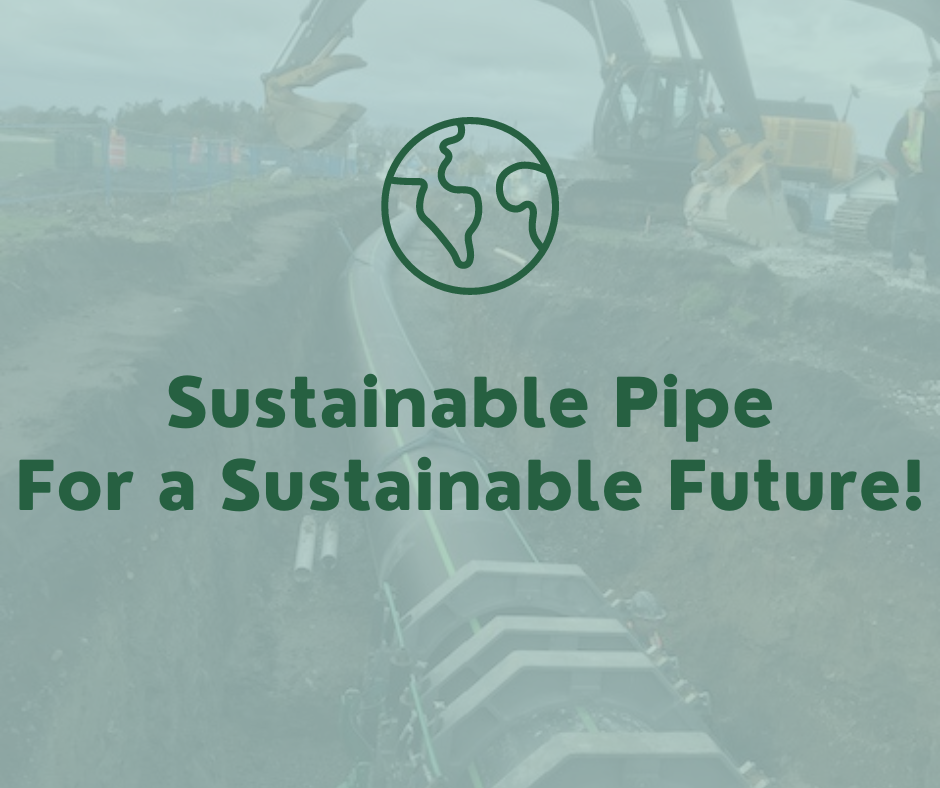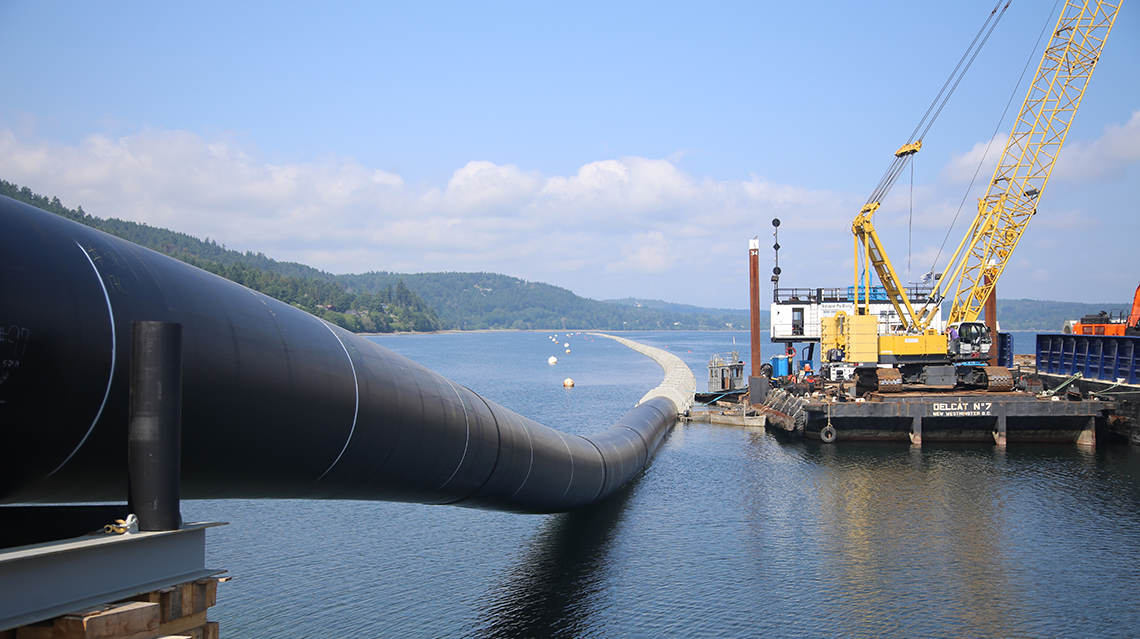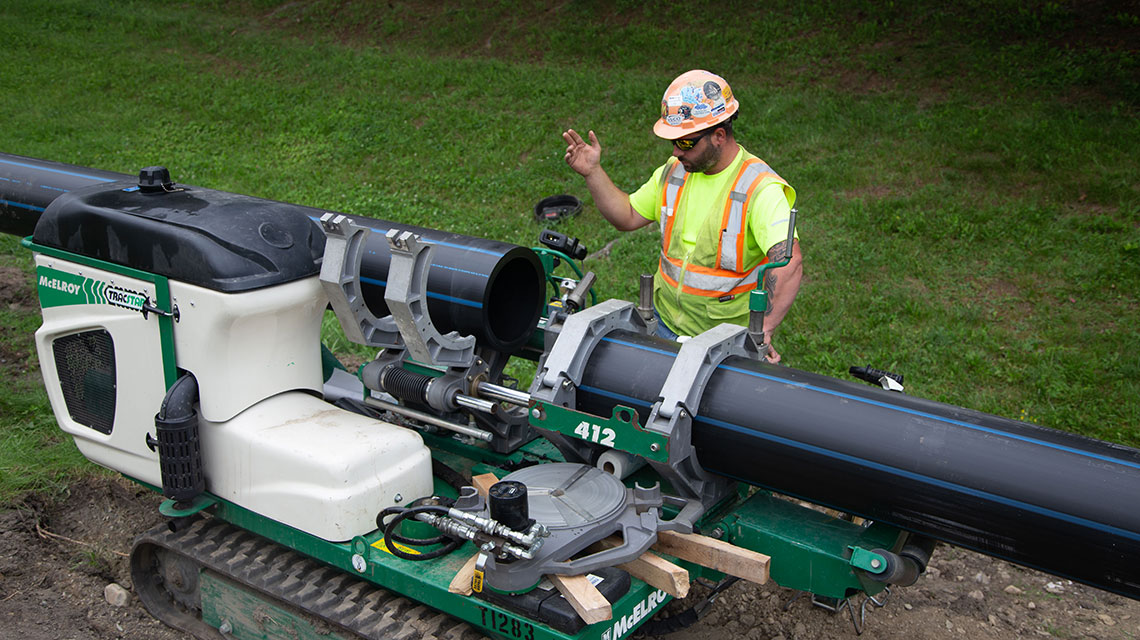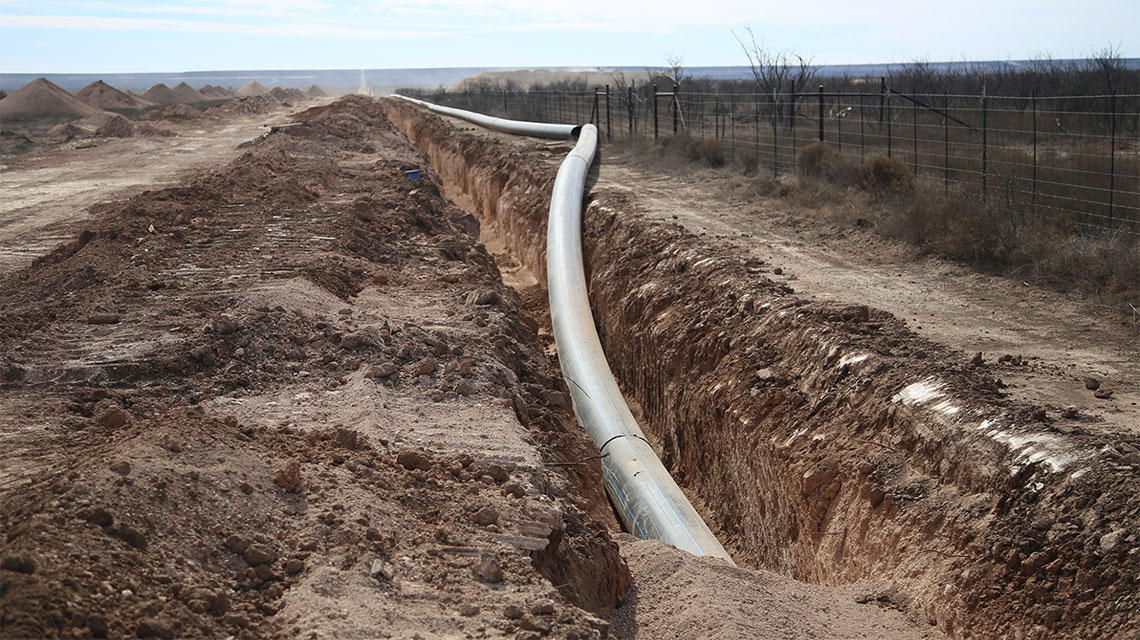Lean Into Green
Friday, 21 April 2023
Learn about the benefits of using high density polyethylene (HDPE) piping solutions for the environment. From reduced energy consumption during production to leak-free joints and a long life cycle, HDPE offers a range of eco-friendly advantages minimizing environmental impact during installation, repairs, and even in landfills, making it a true "green" choice.
- Published in HDPE Pipe
Not Just Any Old Electrofusion Machine
Friday, 21 April 2023
Discover the world's first lithium-ion battery powered electrofusion machine, the Highland Supercell Processor, and its numerous advantages. In this blog, you'll learn more about how this innovative technology simplifies even the most difficult-to-reach fusion jobs, and how it is designed to be used in a range of temperatures and applications.
- Published in Fusion
Large Diameter HDPE Pipe – What’s the big deal?
Tuesday, 14 March 2023
Learn about the advantages and increasing popularity of large diameter HDPE pipe in North America. Discover how advances in resins and technology have allowed for thicker walls and wider usage across a range of industries, including water supply, gas and oil transportation, and hydro-electric power. Read about projects utilizing HDPE pipes up to 157 inches in diameter, and the innovative McElroy Talon Fusion Machine used for welding in the field. From installation to longevity, HDPE offers an environmentally-friendly piping solution for the future. Contact ISCO for all your large diameter piping needs.
- Published in HDPE Pipe
Jump Into the 21st Century with Municipal Water Solutions
Tuesday, 14 March 2023
Learn why municipal water systems are turning to HDPE piping systems as the cure for failing ductile iron piping (DIP) systems. HDPE pipes have a failure rating of one in ten million, require little or no maintenance, and are resistant to corrosion and tuberculation. With reduced time and cost of installation, increased worker safety, and minimal environmental disruption, it's no wonder HDPE is the better choice. Read on to see why ISCO is the prescription for your outdated municipal water system.
- Published in HDPE Pipe, Installation
The Evolution of Potable Water Pipes
Tuesday, 07 March 2023
Discover the pros and cons of three of the most common piping materials used by municipalities. Ductile iron, PVC, and HDPE each have unique characteristics that make them suitable for different applications. While ductile iron was once the go-to for water and sewage, many utilities are now opting for more durable and noncorrosive materials like high-density polyethylene. Explore the differences between these materials, including service life, maintenance requirements, and cost. Plus, learn why HDPE is gaining popularity for its leak-free, corrosion-resistant, and flexible benefits.
- Published in HDPE Pipe
HDPE Brings Lasting Solution for Duluth’s Water-Loss Challenges
Tuesday, 07 March 2023
Learn how Duluth, Minnesota transitioned to a 100% high-density polyethylene (HDPE) conveyance system to address the problem of failing ductile iron pipe water mains, resulting in significant cost savings and fewer disruptions for taxpayers.
- Published in HDPE Pipe






